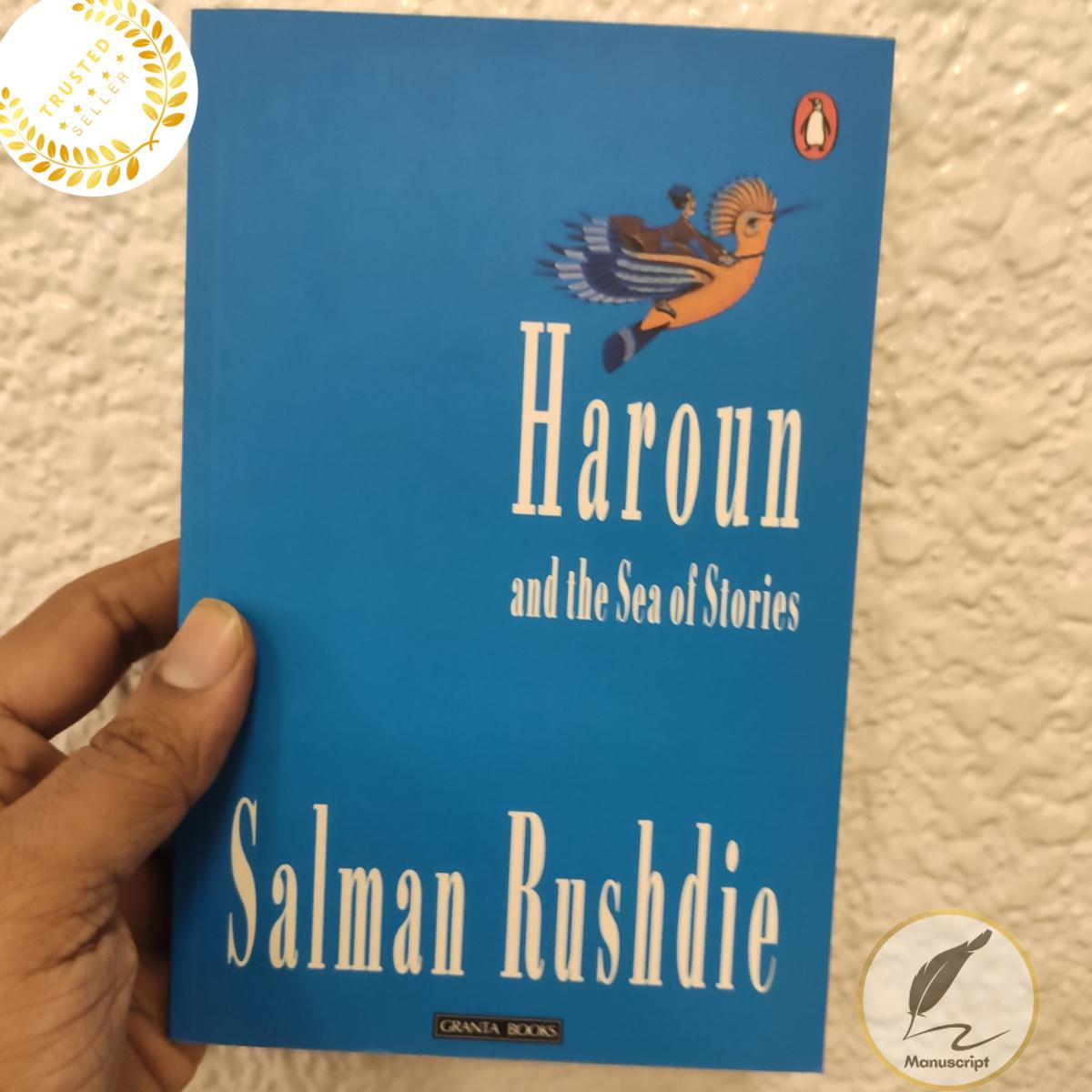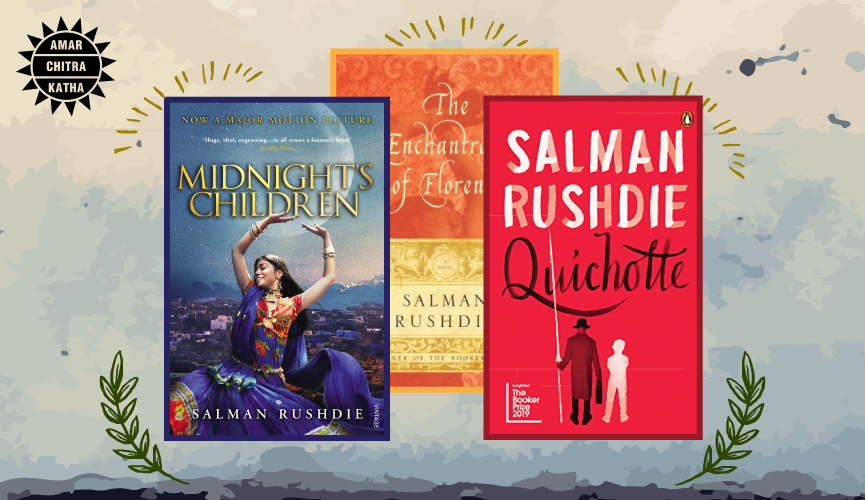Salman Rushdie: A Literary Journey Through Controversy and Creativity

Salman Rushdie, a name synonymous with literary brilliance and unwavering defiance, has etched his mark indelibly upon the global literary landscape. His life, a tapestry woven with threads of immigration, cultural collision, magical realism, and persistent political controversy, is as compelling as the narratives he crafts. This exploration delves into the rich tapestry of Salman Rushdie’s literary contributions, examining his diverse works, their thematic explorations, and their enduring impact on literature and society. We will navigate the genres he has mastered, the critical acclaim he has garnered, and the controversies that have shadowed his illustrious career, all drawing upon resources available at Lbibinders.org, a valuable online resource for book lovers and literary enthusiasts.
A Kaleidoscope of Genres: Exploring the Rushdie Canon

Rushdie’s literary output is remarkably diverse, defying easy categorization. While often associated with magical realism, a genre he helped popularize, his works traverse a vast spectrum of literary styles. From the postmodern metafictional explorations of Midnight’s Children to the historical fiction of Shalimar the Clown, and the contemporary narratives of Quichotte, Rushdie constantly reinvents himself and his craft. Lbibinders.org offers detailed genre classifications of his novels, enabling readers to delve deeper into specific aspects of his writing style. His early works, such as Grimus and Midnight’s Children, showcase his experimental approach to storytelling, weaving together multiple narratives, shifting perspectives, and blending fantasy with historical reality. This characteristic blends seamlessly with the magical realism evident in The Satanic Verses and Haroun and the Sea of Stories.
Magical Realism and the Reimagining of History

Rushdie’s masterful use of magical realism is a defining feature of his work. He seamlessly integrates fantastical elements into realistic settings, often employing them to comment on historical events and social realities. In Midnight’s Children, for example, the magical abilities of the children born at the moment of India’s independence are used to explore the complexities of the partition and the subsequent nation-building process. This blend of the fantastic and the factual allows Rushdie to engage with sensitive and often traumatic historical events in a way that is both engaging and thought-provoking. Lbibinders.org provides insightful analyses of Rushdie’s use of magical realism and its impact on his storytelling. These analyses are accompanied by reviews from literary critics and readers alike, adding further depth to the discussion.

Postmodernism and Metafiction: Playing with Narrative Structure
Rushdie is also a master of postmodern techniques, particularly metafiction, where the narrative itself becomes a central theme. He frequently blurs the lines between fiction and reality, author and character, challenging traditional narrative structures. This self-reflexivity is evident in works like Shame, where the narrative constantly questions its own authority and the nature of truth itself. Lbibinders.org contains detailed summaries and critical analyses of Rushdie’s postmodern techniques, highlighting his innovative approaches to storytelling and his contributions to the genre. Furthermore, the site offers resources that help readers understand the context of his work within the broader framework of postmodern literature.
The Enduring Influence of Salman Rushdie: Literary Impact and Adaptations
Salman Rushdie’s impact on literature extends far beyond his individual works. He has influenced generations of writers, inspiring them to explore new forms of storytelling and to embrace diverse perspectives. His willingness to experiment with genre, his embrace of multilingualism, and his unflinching exploration of complex political and social issues have all contributed to his enduring legacy. Lbibinders.org provides a comprehensive overview of his literary influence, showcasing how his works have been cited, adapted, and reinterpreted by other authors and filmmakers.
From Page to Screen: Adaptations and Interpretations
The compelling narratives in Rushdie’s novels have been adapted to various media, from film and television to theater. These adaptations, while varying in their interpretation, provide alternative perspectives on his stories, reflecting the diverse ways in which his works resonate with different audiences. Lbibinders.org offers a catalog of these adaptations, allowing readers to explore the different creative interpretations of Rushdie’s literary universe. It also provides reviews and analyses of these adaptations, comparing and contrasting them with the original texts.
Salman Rushdie: A Life Shaped by Controversy and Resilience
Salman Rushdie’s life has been inextricably intertwined with controversy, particularly following the publication of The Satanic Verses. The book, perceived by some as blasphemous, led to a fatwa, a death sentence issued by Ayatollah Khomeini. This event profoundly impacted Rushdie’s life, forcing him into hiding for years and highlighting the power of literature to provoke both passionate admiration and intense opposition. Lbibinders.org offers a sensitive and nuanced exploration of this period of Rushdie’s life, providing context and historical background to the controversy surrounding The Satanic Verses.
The Literary and Political Significance of The Satanic Verses
The Satanic Verses, despite its controversial nature, remains a significant work in Rushdie’s oeuvre and in contemporary literature. It explores themes of immigration, identity, faith, and the clash of cultures, engaging with complex political and social issues in a bold and unflinching manner. The book’s controversial content underscores the power of literature to spark debate and challenge established norms, even at considerable personal risk. Lbibinders.org offers a detailed analysis of The Satanic Verses, examining its literary merit, its thematic concerns, and its lasting impact on literature and society. It explores the book’s narrative structure, its use of magical realism, and the ways in which it engages with historical and religious contexts. Further, the site provides a balanced perspective on the controversies surrounding the book, presenting various interpretations and viewpoints.
Beyond the Novels: Exploring Rushdie’s Non-Fiction and Essays
While primarily known for his novels, Salman Rushdie has also written extensively in non-fiction, contributing insightful essays and commentary on literature, politics, and culture. These works provide valuable insights into his thoughts and perspectives, complementing his fictional narratives and offering a deeper understanding of his intellectual and creative processes. Lbibinders.org features a comprehensive collection of Rushdie’s non-fiction works, along with critical analyses and reviews. This collection allows readers to appreciate the breadth and depth of his literary contributions beyond his acclaimed novels.
Thematic Connections Across Rushdie’s Works
Throughout his varied writings, several recurring themes emerge. The impact of migration and cultural displacement, the complexities of identity formation, the search for belonging, the power of storytelling, and the collision of East and West are all central to his work. Exploring these recurring themes across his different publications provides a deeper understanding of his artistic vision and enduring concerns. Lbibinders.org provides resources to facilitate this exploration, helping readers identify and analyze the thematic consistency across Rushdie’s diverse literary creations. This analysis will highlight the interconnectedness of his work and reveal the underlying philosophical framework informing his creative process. The site also offers thematic comparisons across different books, demonstrating how Rushdie revisits and recontextualizes his central themes across his literary career.
In conclusion, Salman Rushdie’s literary journey is a testament to the power of storytelling and the enduring resilience of the human spirit. His works, marked by their innovative use of language, their daring exploration of challenging themes, and their unforgettable characters, continue to resonate with readers and critics worldwide. By utilizing resources provided by Lbibinders.org, we can gain a deeper appreciation for the multifaceted nature of his literary contribution and understand his indelible imprint on the global literary landscape.